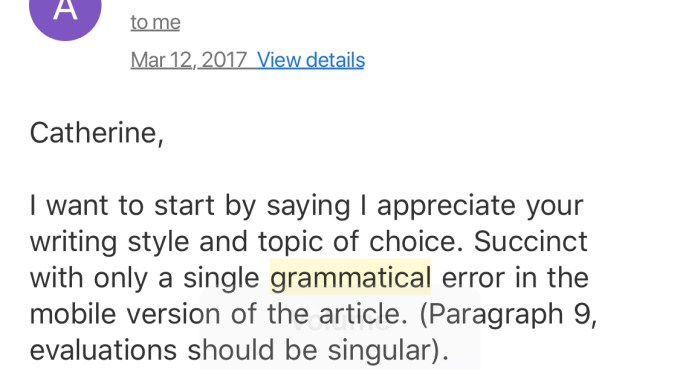This week, I published a piece called the “The master list of PR DON’Ts (or how not to piss off the writer covering your startup).” The problem, of course, with writing a “master list” is that as soon as you publish it, everyone takes the opportunity to point out all the (hopefully) long-tail stories that you didn’t include the first time.
And wow, startup founders and PR folks find some funky ways to pitch journalists.
That original master list had 16 entries, ranging from not using pressure tactics to force a story to not changing your company’s name capitalization multiple times.
Now, here is a list of 12 more PR DON’Ts from the TechCrunch staff, who have turned our Slack thread on this subject into a form of work therapy.
DON’T send severed heads of the writer you want to cover your story

TechCrunch writer Anthony Ha holds his future (and his head) in his own hands.
Heads up! It’s weird to send someone’s cranium to them.
This is an odd one, but believe it or not, severed heads seem to roll into our office every couple of months thanks to the advent of 3D printing. Several of us in the New York TechCrunch office received these “gifts” in the past few days (see gifts next), and apparently, I now have a severed head resting on my desk that I get to dispose of on Monday.
Let’s think linearly on this one. Most journalists are writers and presumably understand metaphors. Heads were placed on pikes in the Middle Ages (and sadly, sometimes recently) as a warning to other group members about the risk of challenging whoever did the decapitation. Yes, it might get the attention of the person you are sending their head to, in the same way that burning them in effigy right in front of them can attract eyeballs.
Now, I get it — it’s a demo of something, and maybe it might even be funny for some. But, why take the risk that the recipient is going to see the reasonably obvious metaphorical connection? Use your noggin — no severed heads.
DON’T send gifts
Journalists have a job to do: we cover the most interesting stories and write them up for our readers. That’s what we are paid to do after all.
And so gifts are very awkward for us, even if they are as thoughtful as a severed head. Gifts imply that the work that we do is not actually “work,” but something we are volunteering to do. There are rightly huge ethical challenges with receiving anything of value from the people whom we cover. Just don’t send them — we don’t need them, want them, or appreciate them.
DON’T send “owe you one”-style thanks emails
Along the same lines, don’t send an email that implies that you need to reciprocate a story with some sort of gift or other obligation. Language like “I owe you one” implies that we have done some service for you. In some cases in tech reporting, that may well be true. Even so, we didn’t write a story as a way to stroke your ego or get you free attention, we did it because our job is to write great stories for our readers. Feel free to just say thanks, and leave the reciprocity out.
DON’T send unsolicited products for review
A site as popular as TechCrunch gets a lot of sample products for review. We only have so much bandwidth to write up these products, and we don’t want boxes to litter our workspace that we didn’t ask for.
If you want a writer to review a physical product, always be sure to get their permission in advance. If a writer isn’t responding, it’s probably best to move on rather than to fling box after box at them. Sending these goods is costly in terms of the environment, but also in terms of our time — we have to return or dispose of these objects, per our ethics guidelines and company policy. When you send products, you create work for the recipient, and that recipient is already busy. Nothing will end your budding relationship faster than creating useless work, so avoid this pattern.
DON’T start your pitch by insulting the writer

So, I think the intention with emails that start by criticizing past writing is to point out how closely the sender has been reading your work. But, if you also read my piece on how to pitch your startup to a tech journalist, then you know that relationship-building is one of the most important components of working with the media. Don’t start that relationship with a criticism.
You would never sit down in a coffee shop to meet a new contact and say, “Those glasses are awful, and it is great to meet you in person.” No writer wants an unsolicited pitch email to critique their writing. Build a relationship, and then such feedback will (often) be much more warmly appreciated.
Oh, and then there is this:
![]()
Yeah … that story didn’t get written.
DON’T pitch non-editorial staff members
Media companies enforce a firewall between the editorial and business staffs, with the intention of ensuring that decisions around stories are never made for pecuniary interests.
For that reason, it is never appropriate to try to pitch your startup through staff members outside the newsroom. Don’t reach out to the ad sales team, or the event organizers, or the accountants. Yes, they are our colleagues, but they are not your targets. Like sending journalists gifts, these sorts of pitches put us in awkward positions, and it is best to avoid this activity. We have plenty of journalists potentially up for writing your company — find a better way to connect with them.
DON’T be cagey about what you’re meeting about

Silhouette of businessman in office meeting room
Accepted embargoes allow you to describe news without a journalist writing it up immediately as news.
Given that option, it makes no sense to ask for a coffee meeting to “share news.” No journalist wants to setup a meeting — potentially knocking out a serious block of time that could be better used for writing or research — just to hear what news you might have to share.
Don’t be cagey. Always confirm an embargo, but then, tell us what you need to tell us in order for us to make a story decision. The more points of friction you create, the more that almost any journalist is just going to ignore what you have to say.
DON’T tell people they are your last choice
This one seems obvious, but then, we had two pitches across the staff this week that went something like this: “Hi XXX, I reached out to YYY and ZZZ and they both said no to this news, so I thought I would just go down my priority list, and just get you to write it instead.” No one wants to be third place, or fiftieth.
Now, there is a nuance here. As I said in the original master list about not pitching multiple journalists at the same publication:
Instead, reach out to the single writer who you think is most relevant at a publication. If you don’t hear back after a reasonable period of time (and no, an hour is not reasonable), then go ahead and pick one additional writer to reach out to, and mention, “Hey, I reached out to Danny Crichton with this news but didn’t hear back, so wanted to reach out to you instead to see if you were interested.”
The key here is not to imply that you have a priority list, or that you are scraping the bottom of the barrel with your latest pitch. Instead, treat each person equally, while also noting that you have attempted to connect with others.
DON’T ask for a copy of an article before publication
Editorial integrity is a fundamental tenet of good journalism. Our readers demand that the stories we write are drafted independently, and all journalists will protect their right to craft a story individually.
Never ask a journalist to read a story before publication. If you are worried about specific facts or nuances, feel free to just send those over in a (pleasant) note. “Hey, I want to make sure that we have been clear about the construction of our round. Firm A and Firm B are equal co-leads, with the other investors participating in the round.” Never say, “Hey, can I read the article before you publish it to make sure you have the round details correct?”
It’s reasonable to ask that a link to the article be sent over when it is published. Just be alert that most journalists (including me) often just move on and forget to do this. There are free ways to track stories on news sites — set one up and don’t even ask for this in the first place.
DON’T mess with email subjects (or reply to an email from five years ago)
One common tactic that I’ve noticed a lot over the years is that founders, and more commonly, PR folks will respond to an email thread we exchanged years ago in order to present a new story. Or they will mess with the subject line, adding “Re:” or “Fwd:” as a way to attract attention.
I get why this happens, but remember the relationship principle: you want to make the life of the person reading your email as easy as possible.
When you send a reply to an email from years ago, I now have a new story with a completely unrelated subject line. The experience is jarring, and it takes extra cognitive effort to understand what is going on. Often, I just archive the whole thread, and occasionally with militant PR folks, just mute the thread entirely (or block them).
Email subjects should pertain directly to the pitch in the body of the message. Journalists may not read every email, but they almost certainly read every subject line. So make the pitch right where they are going to see it.
DON’T pitch on Twitter or LinkedIn
This might be more preference than a universal rule, but essentially no one on our writing staff is a fan of getting pitched on Twitter, or particularly LinkedIn. We are journalists — our emails are not hard to find on the web, and we have written about hundreds of companies, certainly someone in your broader network has worked with one of us.
Twitter and LinkedIn are terrible mediums for pitching. Twitter has character limits and can’t include attachments, and in the case of LinkedIn, the company refuses to put the text of a message into its notifications, forcing users to sign on to the site in order to read it.
If you want the best chance at visibility, wrap the pitch in a single email, and find the address to get it delivered.
DON’T scrape LinkedIn to write stalker-ish custom emails
On my original master list was a point that if you are going to send custom emails to multiple people, please don’t do them terribly.
Along the same lines, don’t write automated scraper programs that take online data and converts it into some sort of email pitch. Referencing the previous employers or schools or majors from a LinkedIn profile doesn’t make me more likely to read an email, it instead feels very … uncomfortable.
If you want to send custom emails, then put in the effort. Otherwise, don’t bother customizing at all.
DON’T pitch in a bathroom, ever

This has happened to me before, and a number of our writers have experienced this activity as well. This is not your number one tactic, nor even your number two. If you are pitching through the partitions of a stall, stall yourself, wipe away your pitch, walk outside, and think deeply about why you are trying to sell your startup when a writer is taking care of their (other) business.
